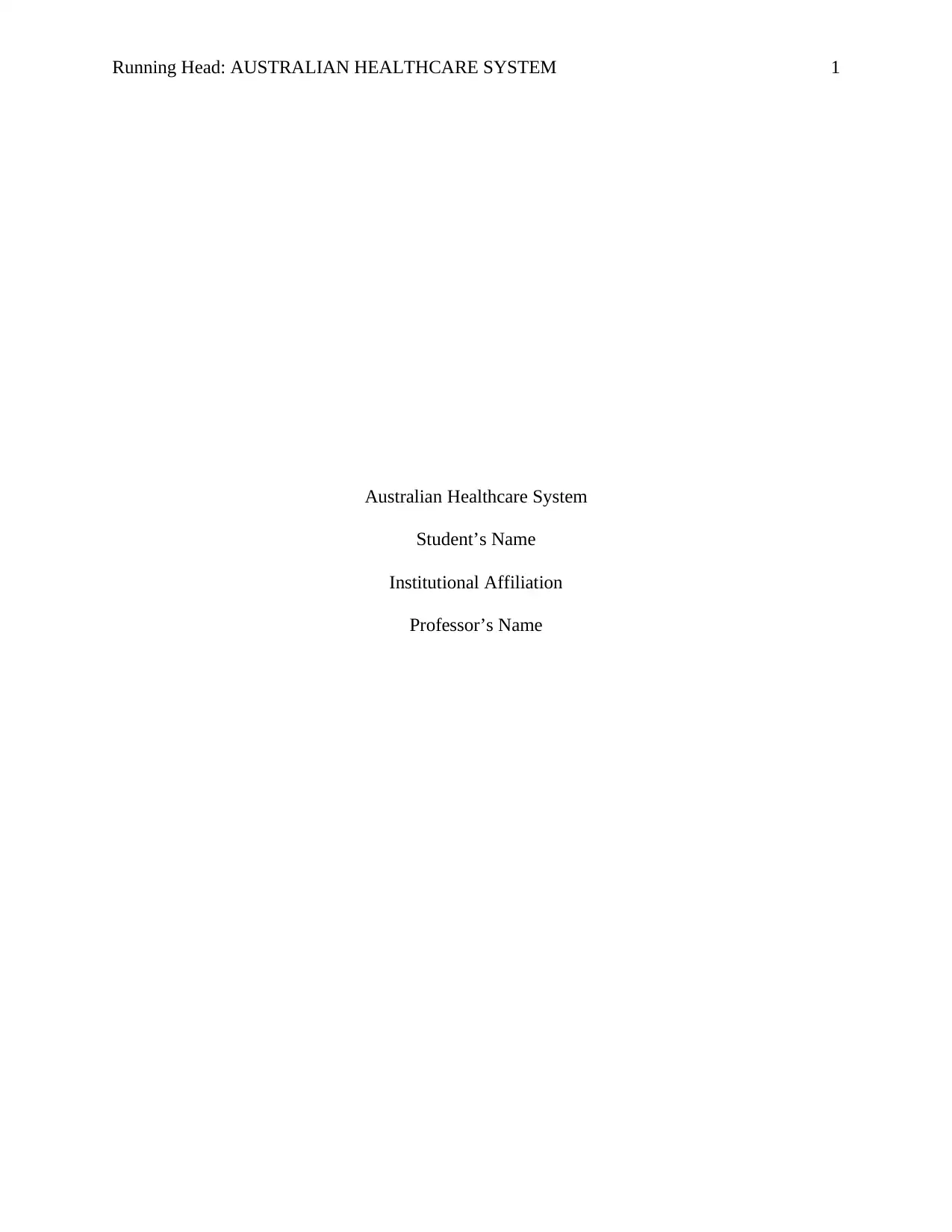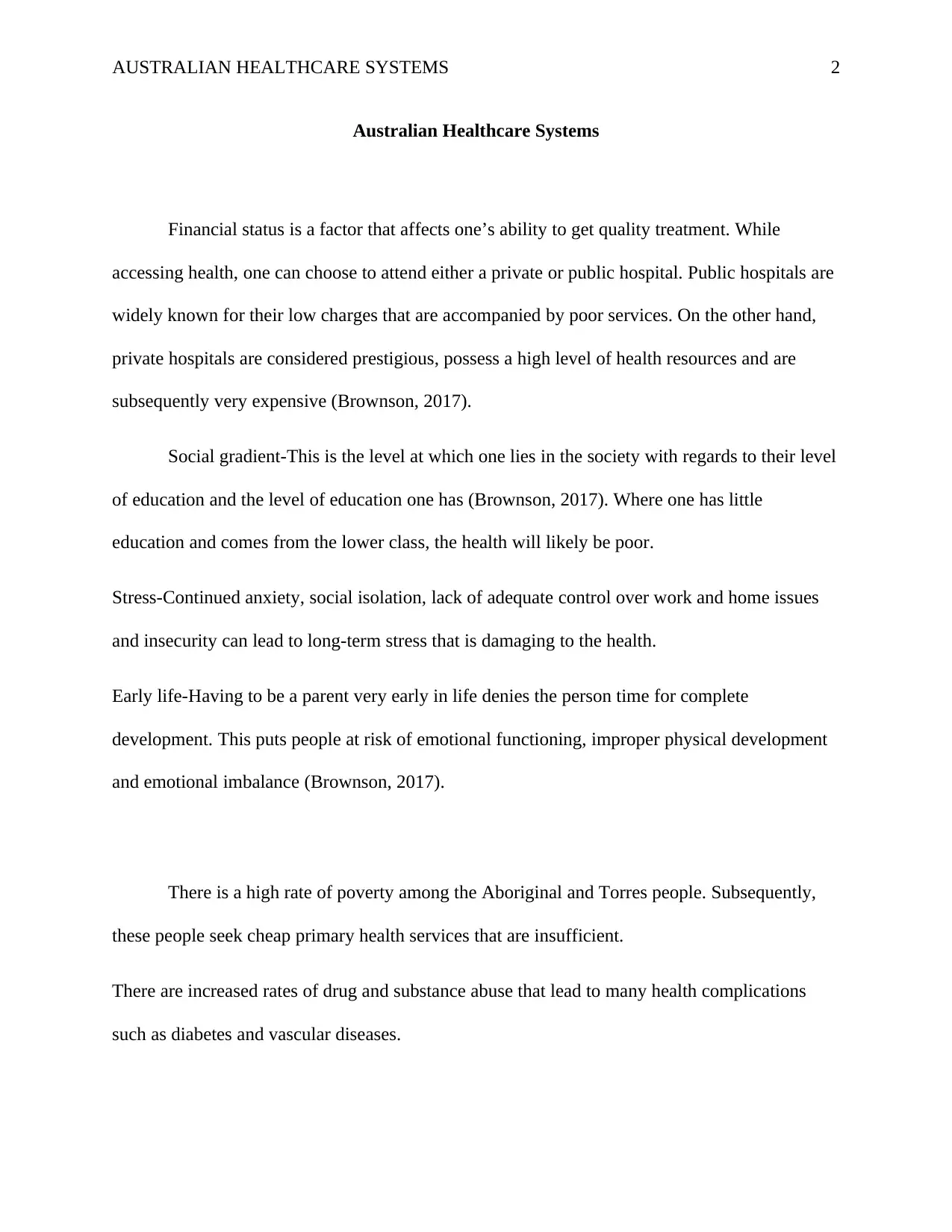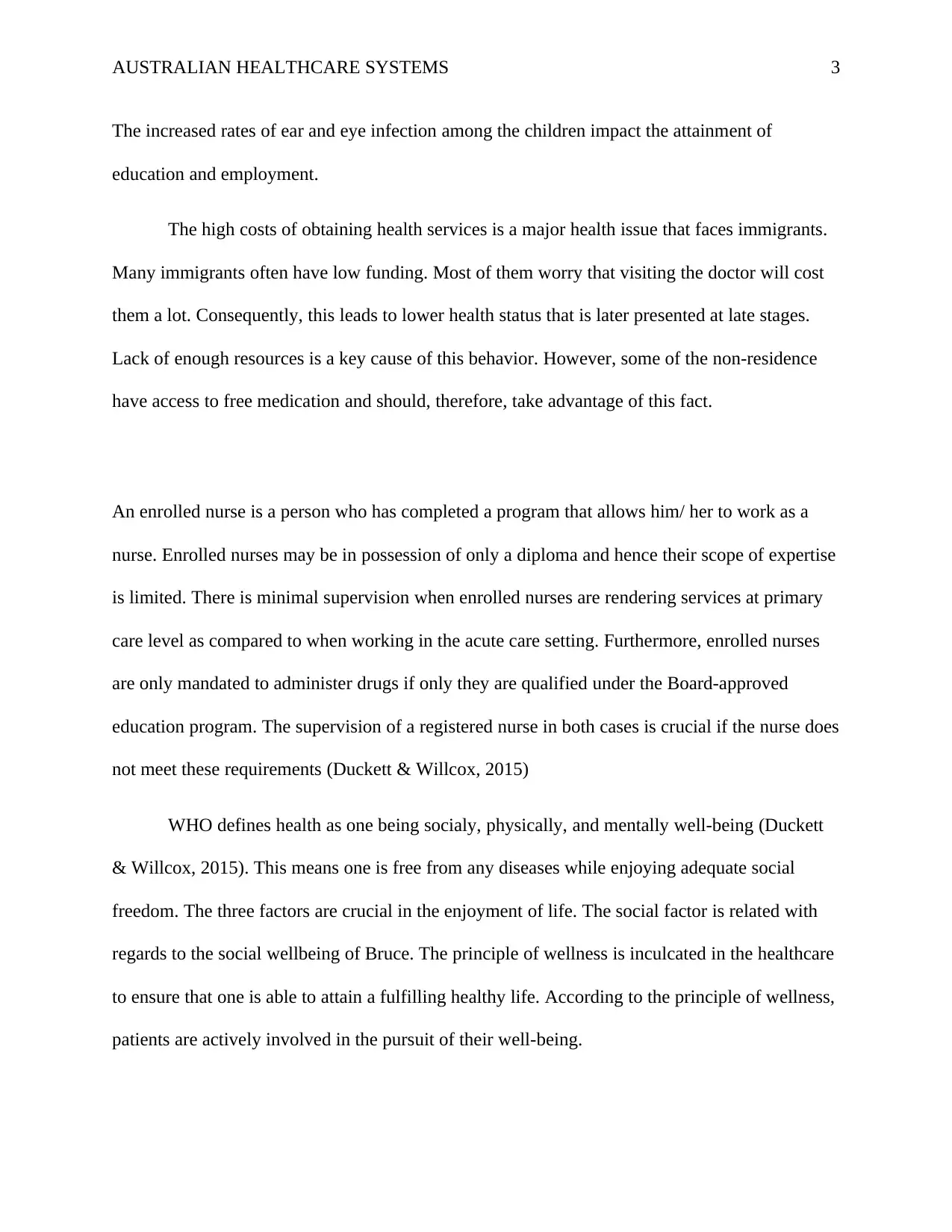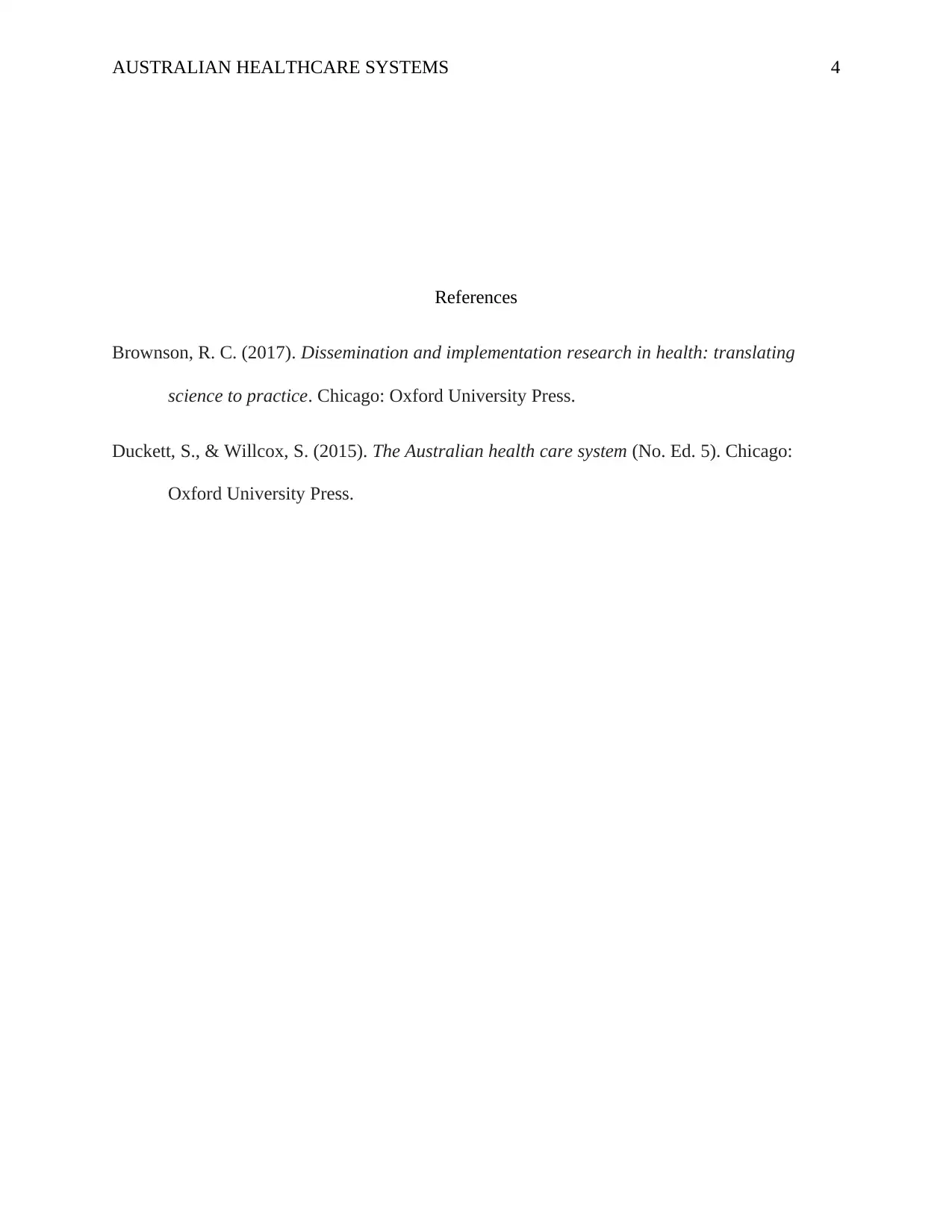Australian Healthcare System: Access, Inequality and Enrolled Nurses
VerifiedAdded on 2023/06/04
|4
|656
|187
Essay
AI Summary
This essay delves into the multifaceted issues within the Australian healthcare system, highlighting how financial status significantly impacts an individual's access to quality treatment, differentiating between the perceived benefits and drawbacks of public versus private healthcare options. It explores social determinants such as education level, stress, and early life experiences, particularly focusing on the health disparities faced by Aboriginal and Torres Strait Islander people, including poverty, substance abuse, and childhood infections. Additionally, the essay addresses the healthcare challenges encountered by immigrants from non-Western countries, emphasizing cultural, environmental, and resource-related factors. It also contrasts the role of enrolled nurses in primary versus acute care settings, discussing their responsibilities, supervision, and collaboration within healthcare teams. Finally, the essay explores the principles of primary healthcare and how wellness principles can be integrated into nursing care, ensuring patients are actively involved in pursuing their well-being. Desklib provides access to similar essays and study resources for students.
1 out of 4











![[object Object]](/_next/static/media/star-bottom.7253800d.svg)